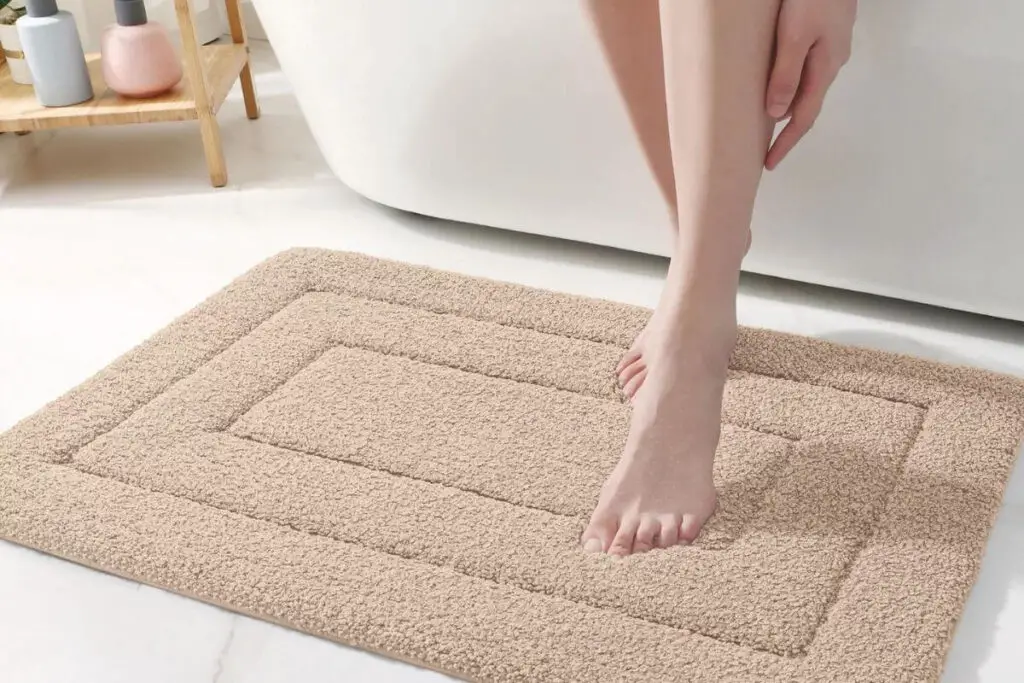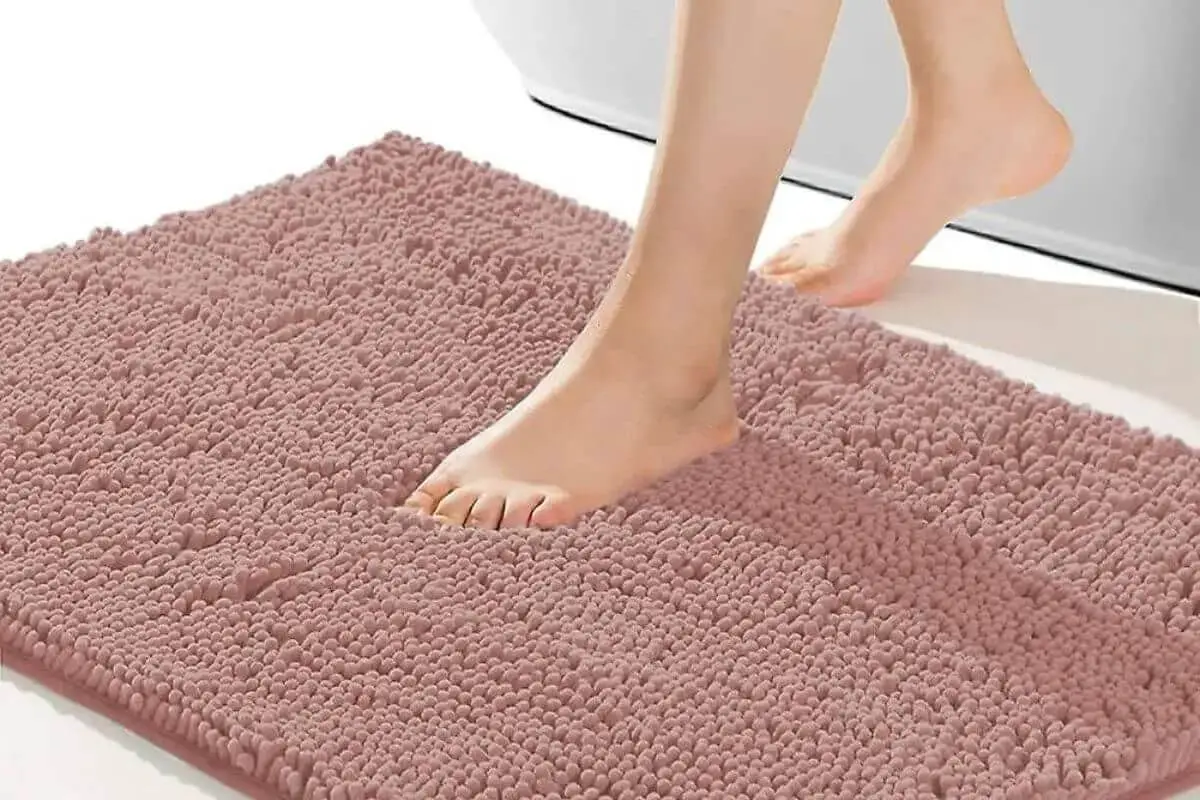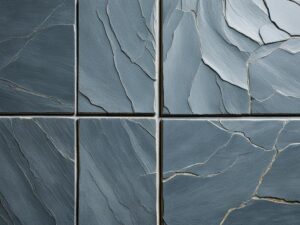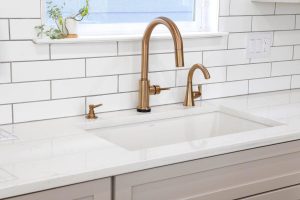Bath mats with suction cups are popular additions to bathrooms, providing a secure and slip-resistant surface. Over time, however, these mats can accumulate dirt, soap scum, and even mildew. To maintain a clean and hygienic bathroom environment, it’s essential to learn the art of cleaning bath mats with suction cups effectively. This comprehensive guide will take you step by step through the process, ensuring your bath mat stays fresh and safe.
I. Understanding the Bath Mat’s Composition
A. Materials Used
- Most bath mats with suction cups are made from rubber, PVC, or similar materials. Understanding the composition helps in choosing suitable cleaning agents and methods.

B. Inspecting Suction Cups
- Check the condition of the suction cups. Over time, they may lose their grip. If any cups are damaged or missing, consider replacing the mat for optimal safety.
II. Gathering Cleaning Supplies
A. Mild Cleaning Solution
- Opt for a mild cleaning solution to avoid damaging the bath mat. Mix warm water with a gentle soap or use a mixture of vinegar and water for a natural alternative.
B. Soft Bristle Brush or Cloth
- Use a soft-bristle brush or a cloth for scrubbing. Avoid abrasive materials that could scratch or damage the surface of the bath mat.
C. Rubber Gloves
- Protect your hands with rubber gloves, especially if using cleaning agents. This adds an extra layer of safety and prevents skin irritation.
III. Preparing the Bath Mat for Cleaning
A. Removing the Mat
- Take the bath mat out of the tub or shower. This ensures a thorough cleaning and prevents dirty water from splashing onto the bathroom floor.
B. Shaking Off Excess Debris
- Shake the mat vigorously to remove loose dirt and debris. This initial step makes the subsequent cleaning more effective.
IV. Cleaning the Bath Mat
A. Scrubbing Suction Cups
- Using the soft-bristle brush or cloth, gently scrub the suction cups and the entire surface of the mat. Pay attention to areas with visible stains or soap scum.
B. Applying Cleaning Solution
- Apply the mild cleaning solution generously to the mat. Ensure it covers the suction cups and all surface areas. Allow it to sit for a few minutes to break down grime.
C. Thorough Rinsing
- Rinse the bath mat thoroughly with warm water. Ensure all cleaning solution is completely washed away to prevent any residue.
V. Drying the Bath Mat
A. Air Drying
- Allow the bath mat to air dry completely before placing it back in the bathroom. Avoid direct sunlight, as prolonged exposure can degrade certain materials.
B. Regular Maintenance
- Implement regular cleaning as part of your bathroom maintenance routine. This prevents the buildup of stubborn stains and ensures a consistently clean bath mat.
VI. Dealing with Mold or Mildew
A. Vinegar Solution
- For mold or mildew, create a solution of equal parts water and vinegar. Apply it to the affected areas, scrub gently, and rinse thoroughly.
B. Sun Exposure
- Sunlight is a natural mold inhibitor. If possible, place the bath mat in direct sunlight for a few hours to prevent mold growth.
VII. Preventing Future Issues
A. Shaking Off Excess Water
- After each use, shake the bath mat to remove excess water. This prevents mold and mildew from forming in the first place.
B. Regular Inspections
- Periodically inspect the bath mat for any signs of wear or damage. Replace it if suction cups or the material show significant deterioration.
VIII. Conclusion: A Clean Foundation for Bathroom Safety
In conclusion, mastering the art of cleaning bath mats with suction cups is not just about aesthetics but also a matter of bathroom safety. By following these steps and incorporating regular maintenance into your routine, you ensure a clean and slip-resistant surface, creating a safe and hygienic environment for everyone in your household.
May your bath mat continue to serve as a reliable foundation for comfort and safety, maintaining its pristine condition for many refreshing showers to come.
IX. Exploring Additional Cleaning Tips
A. Baking Soda Boost
- For stubborn stains or odors, sprinkle baking soda on the bath mat after applying the cleaning solution. Allow it to sit for a while before scrubbing and rinsing.
B. Essential Oils for Fragrance
- Enhance the freshness of your bath mat by adding a few drops of essential oils to the cleaning solution. This not only contributes to a pleasant aroma but also offers additional antibacterial properties.
X. Considerations for Machine Washing
A. Check Manufacturer Guidelines
- Some bath mats with suction cups are machine washable. Check the manufacturer’s guidelines for instructions on machine washing and drying.
B. Use Gentle Cycle
- If machine washing is suitable, use a gentle cycle and a mild detergent. Avoid high heat when drying to prevent damage to the suction cups or material.
XI. Dealing with Discoloration
A. Lemon Juice Solution
- If your bath mat shows signs of discoloration, mix lemon juice with water and apply it to the affected areas. The natural acidity can help lighten stains.
B. Hydrogen Peroxide for Mildew
- For mildew stains, a solution of hydrogen peroxide and water can be effective. Apply it, let it sit, and then scrub and rinse thoroughly.
XII. Storing the Bath Mat
A. Proper Drying Before Storage
- If you need to store the bath mat temporarily, ensure it is completely dry. Storing a damp mat can lead to mold growth.
B. Ventilation
- Store the bath mat in a well-ventilated area to prevent any musty odors. Consider using a breathable storage bag.
XIII. Environmental Considerations
A. Eco-Friendly Cleaning Alternatives
- Choose eco-friendly cleaning solutions to minimize environmental impact. Natural options like vinegar and baking soda can be effective and environmentally conscious.
B. Recyclable Bath Mats
- When it’s time to replace your bath mat, consider options made from recyclable materials. This contributes to sustainability and reduces waste.
XIV. Educating Household Members
A. Care Guidelines
- Ensure everyone in the household is aware of proper care guidelines for the bath mat. Educating them on regular cleaning practices helps maintain a clean and safe bathroom environment.
B. Prompt Cleanup
- Encourage prompt cleanup after spills or use of products like hair dyes to prevent potential staining or damage to the bath mat.
XV. Conclusion: A Pristine Bath Mat for Everyday Comfort
In conclusion, maintaining a clean bath mat with suction cups is not just a task; it’s a commitment to everyday comfort and safety. By exploring additional cleaning tips, considering machine washing options, and addressing specific issues like discoloration, you ensure your bath mat remains a reliable and hygienic part of your bathroom.
May your journey in bath mat care continue to be a seamless and rewarding experience, providing a foundation of cleanliness and comfort for every bath or shower.
Frequently Asked Questions (FAQs) about Cleaning Bath Mats with Suction Cups
How often should I clean my bath mat with suction cups?
It’s recommended to clean your bath mat at least once a week to prevent the buildup of dirt, soap scum, and potential mold. Increase frequency if the mat is used more frequently.
Can I use any cleaning solution on my bath mat, or are there specific recommendations?
It’s best to use a mild cleaning solution, such as a mixture of warm water and gentle soap or a combination of vinegar and water. Harsh chemicals may damage the mat’s material or suction cups.
My bath mat has stubborn stains. How can I remove them?
For stubborn stains, consider using baking soda along with the cleaning solution. Let the mixture sit for a while before scrubbing. For discoloration, try lemon juice or hydrogen peroxide solutions.
Are there specific precautions to take when machine washing a bath mat with suction cups?
Check the manufacturer’s guidelines. If machine washing is suitable, use a gentle cycle and mild detergent. Avoid high heat during drying to prevent damage to suction cups or the material.
Can I use essential oils for fragrance when cleaning my bath mat?
Yes, adding a few drops of essential oils to your cleaning solution is a great way to enhance the freshness of your bath mat. Essential oils also offer antibacterial properties.
How do I prevent mold or mildew on my bath mat?
Shake off excess water after each use, ensure thorough drying before storing, and periodically place the mat in direct sunlight. These measures help prevent the conditions conducive to mold growth.
My bath mat has lost some suction cups. Can I still use it?
It’s advisable to replace the mat if suction cups are damaged or missing. The effectiveness of the mat in providing a slip-resistant surface relies on the integrity of its suction cups.
Can I store my bath mat without drying it completely?
It’s not recommended. Storing a damp bath mat can lead to mold growth. Ensure the mat is completely dry before storing, and choose a well-ventilated storage area.
Are there eco-friendly options for cleaning bath mats?
Yes, using natural alternatives like vinegar and baking soda is an eco-friendly choice. Additionally, consider bath mats made from recyclable materials for sustainability.
How do I educate household members about bath mat care?
Share care guidelines with household members, emphasizing prompt cleanup after spills and raising awareness about proper cleaning practices. A collective effort ensures the longevity of the bath mat.



